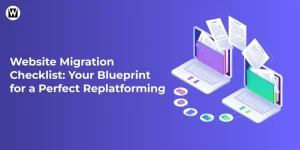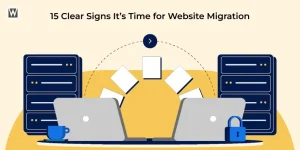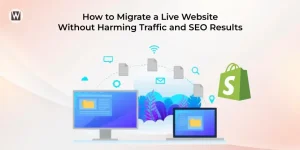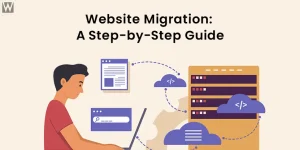Common Risks of Website Migration and Their Impact
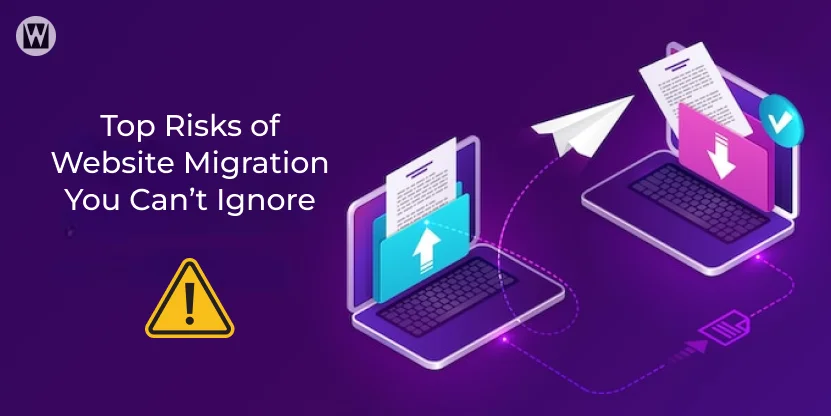
The only thing worse than launching a new website is migrating an existing one. As technology changes, design trends change, and user preferences evolve, upgrading your website becomes a looming question mark over the CTO’s head. At the same time, it’s completely fine to feel uneasy about moving platforms (and the tension that comes with it).
Website operations are complex and depend on multiple tools and technologies to run smoothly. At first glance, some lots can go wrong when migrating to a new platform or CMS, and website owners have lots of valid reasons for getting cold feet, such as:
- The fear of competition
- The sunk cost fallacy
- The fear of losing time and other valuable resources
- Concerns about outdated systems
- Replatforming projects require time, money, and dedicated resources
Well, we are here to tell you that it should not be this way. In this comprehensive website migration guide, we will examine the challenges or risks associated with migration and share the best practices for getting things done smoothly.
You will learn about website migration “red flags” to look for and the risks to watch out for. We will also touch on the role of website migration experts, how to carefully plan your project for a smooth migration, and how to measure the re-platforming results.
Common Challenges In Website Migration
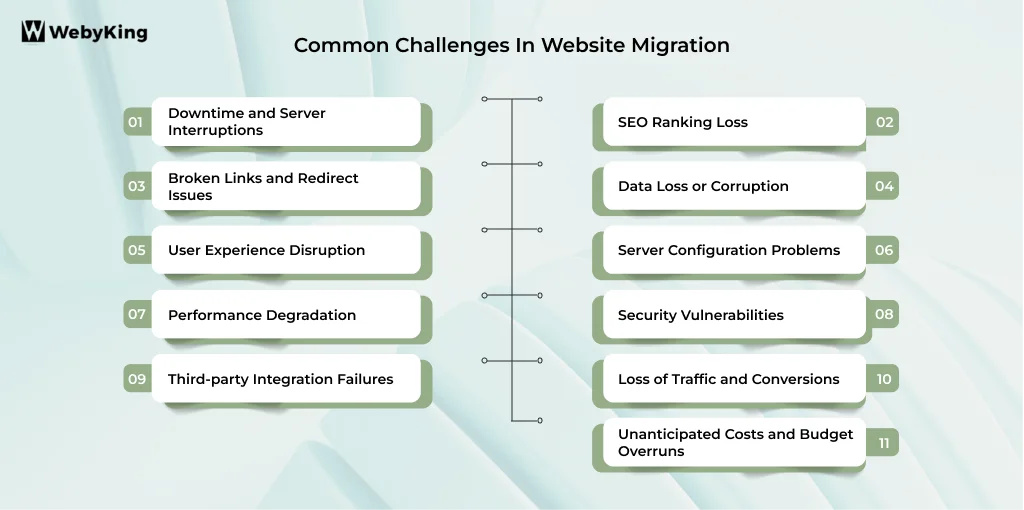
1. Downtime and Server Interruptions
One of the most critical risks that may occur in the migration of a website is experiencing downtime or service interruptions. Seamless transition from one server or platform to another is the need of the hour for sustaining user trust and engagement. Prolonged periods of downtime may leave frustrated visitors, missed opportunities, and a general drop in overall traffic.
To avoid downtimes, one can use a staging environment to test the migration procedure before putting it live. Also, during website maintenance, perform it at non-peak hours to keep the effect on users down. Thus, businesses need to take proactive measures regarding minimal downtime of the website or optimization of UX best practices to overcome the risks occurring due to migration.
2. SEO Ranking Loss
SEO ranking loss is a critical concern when migrating a website. Search engines such as Google rely heavily on consistency in content, structure, and URL architecture to rank pages properly. If any of these factors are disturbed during migration, it can cause rankings to plummet drastically. Planning your migration with SEO in mind is one of the best ways to avoid this.
Other measures that can maintain visibility even during the transfer are to invest in professional website design services that contain SEO experience. It also makes sense to closely monitor performance after migration to identify SEO issues early and act quickly on them. Learn how to migrate a website without harming SEO and safeguard your search visibility before it’s too late.
3. Broken Links and Redirect Issues
Broken links and incorrect redirects are the most common risks that arise during website migration. When you make any URL changes due to a platform switch or a change in website structure, the existing links may break, leading to 404 errors.
These errors can lead to an adverse user experience, annoying visitors, and potentially harm your website’s rankings. Implementing a 301 redirect strategy can help ensure that users and search engines are automatically directed to the correct new pages. Moreover, if you shake hands with an experienced website development company, make sure they understand the significance of preserving the old link structure and executing redirects correctly.
4. Data Loss or Corruption
During website migration, there is always a risk of data loss or corruption, especially if the process isn’t properly executed. Before starting the migration process, it’s essential to back up all data to ensure that nothing is lost during the transfer. Additionally, test the new website environment to ensure that data integrity is maintained.
Data integrity isn’t only about protecting content but also ensuring that user data is secure. When planning your migration, factor in the cost of website data protection measures, including backups and encryption, to mitigate the risk of corruption. As part of website maintenance, ensure that the new platform is capable of handling large datasets and supports any necessary security protocols to prevent data loss or breaches.
Bring Your Brand to Life with Your Website.
5. User Experience Disruption
Another tangible threat in website migration is user experience (UX) disruption. Failure includes malfunctioning features, slow-loading web pages, and mismatched styles, which the users constantly criticize. To increase the site visits and have low bounce rates, it is vital to ensure that the newly developed site is user-friendly and has good functionality across the various devices.
In addition, having a slow website or one that is not easy to navigate can guarantee the loss of customers and, thus, low conversion rates. Website migration is another critical aspect that ensures that potential or existing clients do not move away as a result of poor website speed, and this must be undertaken with the aim of improving website speed and optimizing the sites.
6. Server Configuration Problems
Another concern is server configuration issues, which often arise when switching hosts or platforms during the website migration process. If not well done, the outcome of setting up servers is likely to have problems with performance, security, and functionality.
For instance, it may crash, slow down, or even experience downtime if, for example, the new server is improperly set for the tested traffic or if the required software is not correctly installed.
Website server configuration involves selecting the right server type and proper compatibility of the server with your website technology and speed.
7. Performance Degradation
Loss of performance is one of the possible negative consequences of a website migration if it is not implemented correctly. The only way migration can be a problem is when migration results in a slow site after moving the site to a new server or platform since optimizations are not done. After migration, the speed of a website influences user satisfaction and SEO results, so it is advisable to evaluate the performance.
To eliminate performance degradation, special attention should be given to optimizing images, scripts, and all other resources to make the website faster.
8. Security Vulnerabilities
Website migrations have a security threat associated with them if the implementation is not well conducted. There is always a risk of creating new openings for malicious access during the migration since this may involve moving sensitive information or not implementing proper security features every time.
This implies that website design must have security measures in place, like the SSL certificates and firewalls, and must be updated frequently. When moving to a new platform, ensure that it is as secure as possible, and when creating a website maintenance checklist, ensure that security checks are taken regularly.
9. Third-party Integration Failures
Many websites, including huge ones, rely too much on third-party integrations like payment processors, marketing tools, or analytics platforms. These integrations can often break during a migration, leading to annoying functionalities. To mitigate this risk, conduct thorough testing of all integrations before and after the migration process.
Make sure that any third-party services or plugins are compatible with the new platform and that API connections are correctly configured. This ensures that your website continues to function seamlessly without any hiccups.
10. Loss of Traffic and Conversions
One of the most critical challenges of website migration is the potential loss of traffic and conversions. If the migration is not planned correctly, it can cause broken links, reduced visibility, or a poor user experience, all of which can cause lost visitors. To avoid this, ensure that the website design is optimized for both desktop and mobile devices and that the user journey is glitch-free.
After migration, closely measure website traffic and conversion rates to identify issues quickly. If required, update your website content to enhance SEO performance and user experience.
11. Unanticipated Costs and Budget Overruns
Website migrations can quickly increase costs if they are not carefully planned. Unexpected challenges, such as additional development time, third-party integrations, or performance optimization, can all contribute to a higher-than-expected costing structure.
To avoid budget overruns, create a migration roadmap that includes all the potential costs, including the cost of website hosting, design services, and plugins you might need.
Migrating a website can get costly, but having a clear plan can prevent unnecessary expenses. For more tips, follow our website migration checklist.
Have A Site Migration Coming Up?
Too often, entrepreneurs who are associated with online businesses form relations with developers and designers who have limited skills in platform and technology solutions. Teams at WebyKing are among the most diverse, talented, and experienced teams in an extensive range of modern technology solutions.
Based on your business’s scalability, nature, and requirements, we recommend ideal platforms and solutions based on our extensive array of expertise. Whether you are migrating your current store to another CMS, need help with Shopify development or are interested in learning more about website migration, we have you covered.
Frequently Asked Questions
What does website migration mean?
Website migration means migrating from your current website solution to a new one. An entrepreneur may consider migrating in order to:
- Improve the website’s visibility
- Access new features and functionality
- Stay ahead of the competition
Should I submit a new sitemap after a website migration?
Yes! If you have recently conducted a website migration, it is usually best to submit an XML sitemap to help Google find and index your pages.
How long does website migration take?
Website migration timelines vary but basically range from a few months to over a year. Certain influencing factors, such as platform complexity, data migration, and testing, can influence the time it takes. A well-planned process can smooth the transition.
Whether you’re upgrading technology, improving performance, or rebranding your business, this checklist ensures a smooth and successful migration every step of the way. Get Your Free Checklist Now!


Ravi Makhija, the visionary Founder and CEO of WebyKing, is a seasoned digital marketing strategist and web technology expert with over a decade of experience. Under his leadership, WebyKing has evolved into a premier full service web and marketing agency, delivering innovative solutions that drive online success. Ravi’s deep understanding of the digital landscape combined with his passion for cutting-edge technologies empowers him to consistently exceed client expectations and deliver results that matter.

